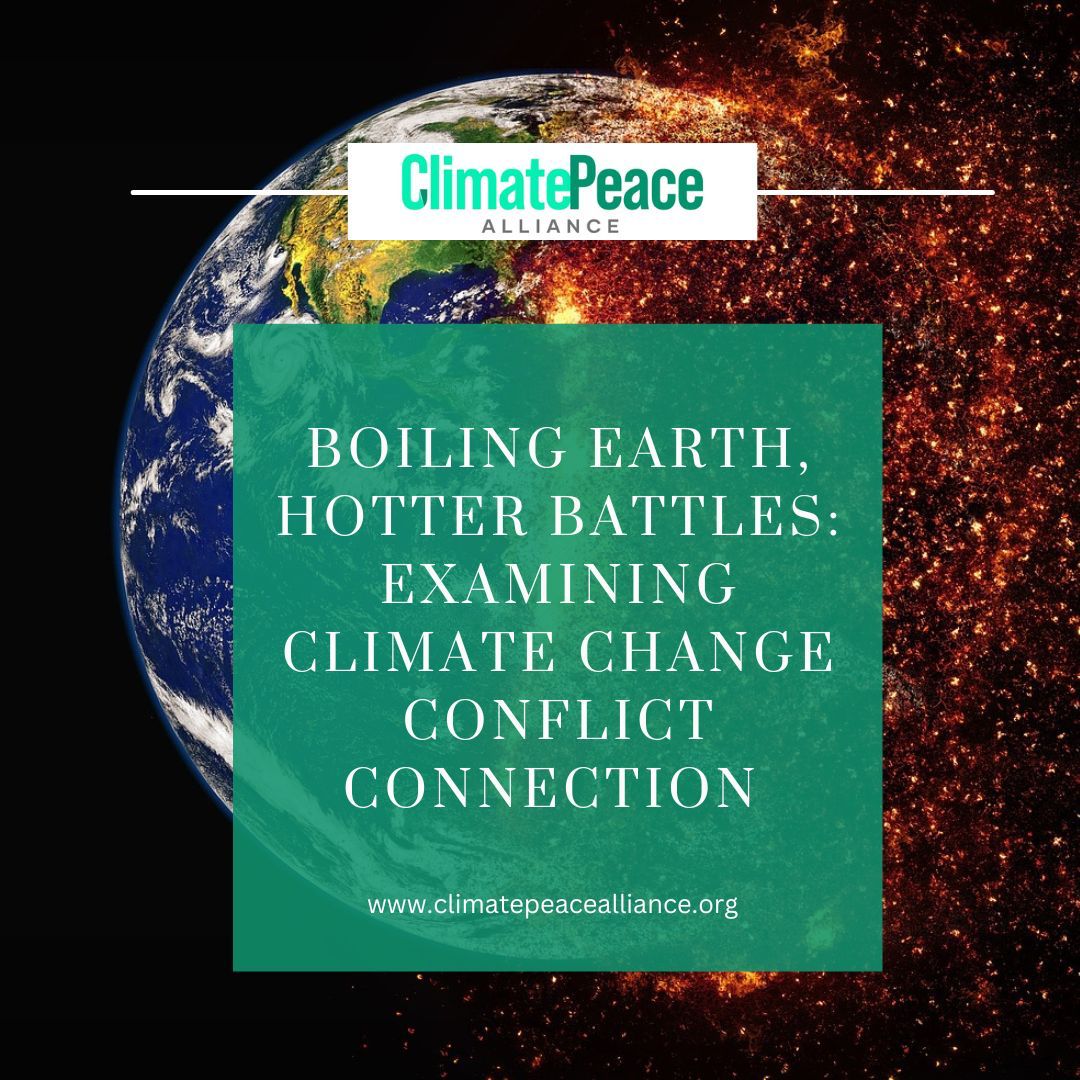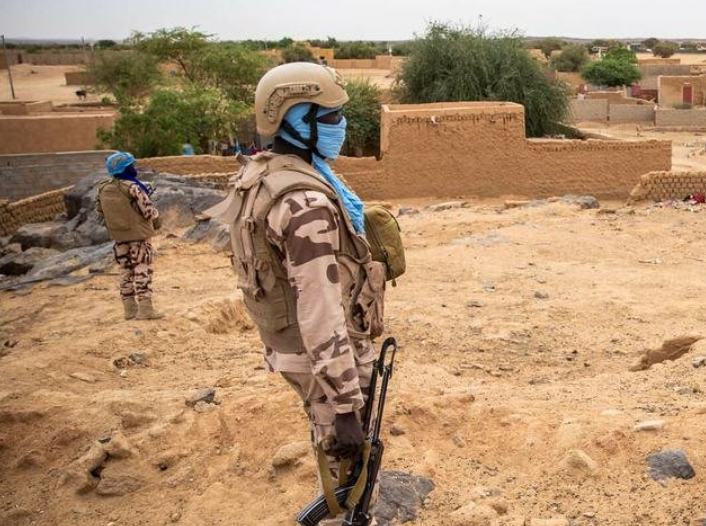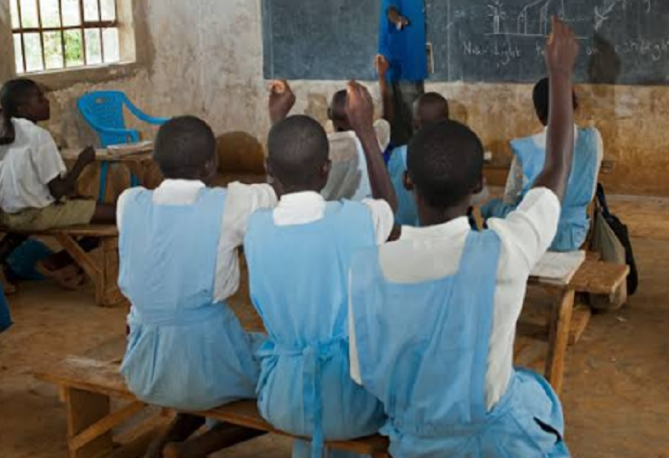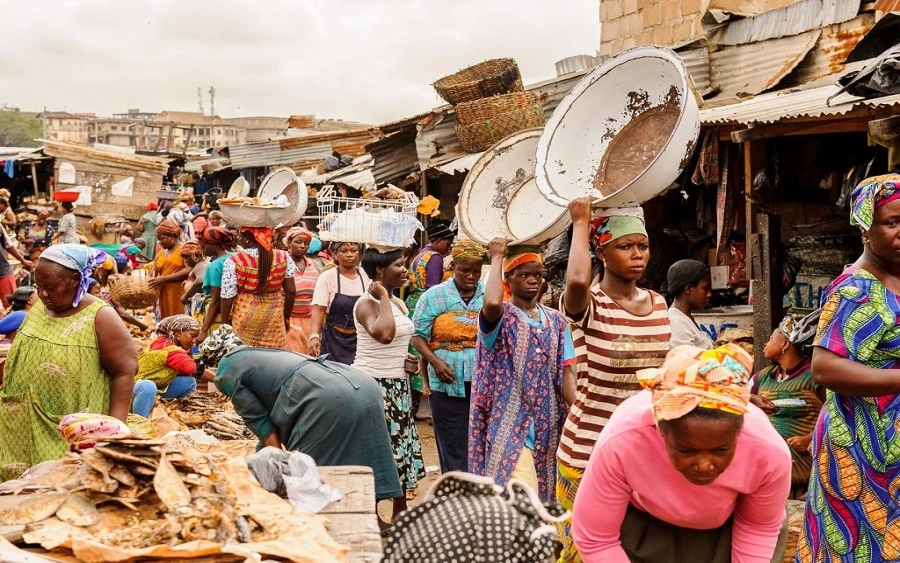BY SEUN BAKARE AND NKEM AGUNWA
Climate change and its associated impacts are a major threat to people and the planet. Extreme heat, intense drought, floods, wildfires, sea level rises, and unpredictable rainfall patterns are all impacting communities around the world. Developing countries are particularly vulnerable to climate change, despite contributing less to greenhouse gas emissions than developed countries. This is because developing countries often have less developed infrastructure and fewer resources to cope with climate impacts.
Climate change is already disrupting the supply of basic resources such as food and water in vulnerable countries. This can lead to conflict and displacement, as people compete for scarce resources. For example, prolonged droughts and other impacts of climate change in Somalia, Sudan, Nigeria, and Syria have contributed to food and water scarcity, which has in turn exacerbated conflict in these countries.
Climate change and mass migration can feed into each other, creating a vicious cycle. For example, the World Bank estimates that climate change could force 216 million people to become internal climate migrants by 2050. This influx of migrants could put a strain on resources and create tensions in communities and countries that are already struggling to cope with climate change. In particular, where institutions are unable to manage large-scale migration and where inter-communal conflicts and land ownership disputes are common, mass migration could exacerbate conflict.
1. Research matters
Advertisement
A growing body of research shows that more than half of the top 10 countries with the highest number of internally displaced people due to conflict and violence have been severely affected by climate change. They include countries that have experienced desertification, droughts, floods, or a weakened ability to build climate resilience. Climate change can exacerbate conflict and displacement by disrupting livelihoods, increasing competition for resources, and undermining social cohesion. It is therefore important to address climate change and its impacts in order to reduce the risk of conflict and displacement in vulnerable countries.
(Source: Internal Displacement Monitoring Centre)
Twenty years ago, the world witnessed the Darfur conflict, which many have called the first climate change conflict. Thousands of people were killed and displaced, and mass atrocities and human rights violations were committed. While the international community mobilized to respond to the humanitarian crisis, it became clear that the conflict had complex and long-standing roots. Decades of declining rainfall and desertification in Sudan had a significant impact on the two predominant agricultural systems: smallholder farmers dependent on rain for crops, and nomadic pastoralists reliant on fresh pasture for livestock. As rainfall dwindled and land once used for grazing dried up, competition for resources intensified. Previously, these communities had shared wells and farmers had welcomed herders to graze their livestock on their land. However, the severity of the drought led farmers to fence their land out of fear that the herds would ruin it. This led to conflict between two communities that had once coexisted peacefully.
Advertisement
The Darfur conflict is a complex and multifaceted conflict with roots in long-standing political and ethnic tensions, fragile co-existence between farmers and nomadic pastoralists, and the harsh effects of climate change. State and non-state actors have manipulated these tensions, exacerbating the conflict. For example, the Sudanese government has armed and supported Arab militias that have attacked African communities. Climate change has reduced land availability and intensified competition for resources, which has further fueled the conflict. As land becomes scarce, farmers and nomadic pastoralists are more likely to come into conflict. Additionally, the discovery of natural resources such as gold has attracted new actors to the conflict, who are vying for control of these resources. The joint United Nations–African Union Hybrid Operation in Darfur (UNAMID) was established in 2007 to help foster peacekeeping efforts. However, the conflict has persisted, due in part to the ongoing effects of climate change and the continued involvement of state and non-state actors.
2. Water scarcity and conflict
Water scarcity, and the struggle of control over natural resources is not a phenomenon solely peculiar to Sudan. The threat multiplying effects of climate change also played a role within the Arabian region. For instance, millions of people within the region rely directly on pastures or water for their livelihoods, yet the region is home to some of the most water-stressed countries in the world. The demands for water therefore exceed the available amount per time.
(Source: World Resources Institute)
Advertisement
Water scarcity is not necessarily a direct cause of conflict, but it can lead to food, water, and energy insecurity, which can significantly contribute to political tension and instability. This can drive people from water-dependent livelihoods into harmful alternatives, fueling conflict and making affected communities vulnerable to terrorism and religious extremism.
3. Syria and the scarcity of resources
In the years leading up to the 2011 uprising in Syria, the Levant region experienced a series of droughts. Syria was particularly hard hit, especially in the northeast, where wheat production collapsed and herders lost most of their livestock. Agriculture is the second largest contributor to the Syrian economy, so the drought had a devastating impact on farmers, herders, and rural families. Many people were displaced from rural areas to urban centers, where resources were already scarce.
Advertisement
The lack of agricultural productivity due to climate change led to food insecurity and public discontent. Instead of addressing resource mismanagement and economic challenges, Bashar Al-Assad cut subsidies and favoured elite industrial sectors. Water legislation aimed at curbing illegal wells fuelled corruption. Dara’a, a rural farming community, which was hit hard by drought and neglect became a focal point for early protests in 2011.
Advertisement
In a 2021 United Nations Security Council meeting, country representatives acknowledged the nexus between countries impacted by climate change, and their vulnerability to conflict and terrorist recruitment. The explored case studies of Sudan and Syria show how climate change acts as a threat multiplier which preys on existing divides and instabilities.
4. Rising precipitation levels and flash floods
Advertisement
Water scarcity (amongst other factors) played a dominant role in the above-mentioned case studies. For instance, in some countries within the South Asian region such as Pakistan, high levels of precipitation resulted in flash flooding. In the case of Bangladesh, the situation is just as dire with the Bangladesh-Myanmar border recently being hit by Cyclone Mocha in May this year. Accompanied with heavy rainfall and strong winds which led to landslides, the cyclone left damage and destruction in its wake, affecting homes and facilities in all 33 Rohingya refugee camps in Cox’s Bazar and neighbouring Bangladeshi communities.
“Bangladeshis in coastal communities have already begun migrating inland, to urban areas which are already densely populated. With weak local governance, poor urban management and existing ethno-religious tension driving underlying domestic fragility, climate-driven migration and poverty will drive or amplify conflict and human rights challenges.” – Mubashar Hasan Ph.D. ; ( member of the Research Advisory Council of the RESOLVE Network. ) Geoffrey Macdonald, Ph.D. Former Bangladesh Country Director, International Republican Institute)
Advertisement
Non-state actors may exploit climate change-induced crises to recruit members and grow their influence, as seen in the case of the Jamaatul Mujahedeen Bangladesh (JMB) terrorist group in the early 2000s. Despite the challenges posed by climate change and the suffering of vulnerable communities, there is hope. Climate Peace Alliance is working to ensure that the needs and rights of marginalized communities affected by climate change and conflict are prioritized by key actors at all levels. Our mission is to centre the destructive impact of climate change on conflict and initiate sustainable solutions that tackle conflict root causes and empower communities, policymakers, and stakeholders to build resilient, equitable, and sustainable futures. Frontline communities at risk must be represented and influence the formulation and implementation of climate policies and solutions. They know where it hurts most and should be at the forefront of shaping the solutions. Additionally, climate justice principles must be integrated into conflict resolution to fully address root causes of conflict.
Practical nature-based solutions such as restorative agriculture, water harvesting and drip irrigation, and sustainable management of agroforestry systems can go a long way in helping to cope with and reverse the effects of climate change. Empowering stakeholders with climate justice knowledge, early warning systems for climate-ravaged regions, and swift response mechanisms is also crucial. It is grossly unfair that those least responsible for climate change suffer most. Earth is our only home; let’s protect it, starting now.
Climate Peace Alliance (CPA) is an international non-governmental organisation that works at the intersection of climate justice and violent conflicts. We are committed to addressing climate injustice and conflicts through peaceful and collaborative efforts. Recognising the importance of forging alliances among diverse stakeholders to create harmonious and sustainable communities, we work at the systems level of policy advocacy and grassroots mobilisation for action.
Bakare is the Executive Director at CPA, Agunwa is a journalist and activist.
Views expressed by contributors are strictly personal and not of TheCable.
Add a comment






